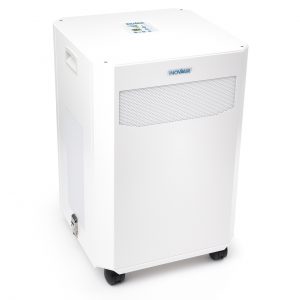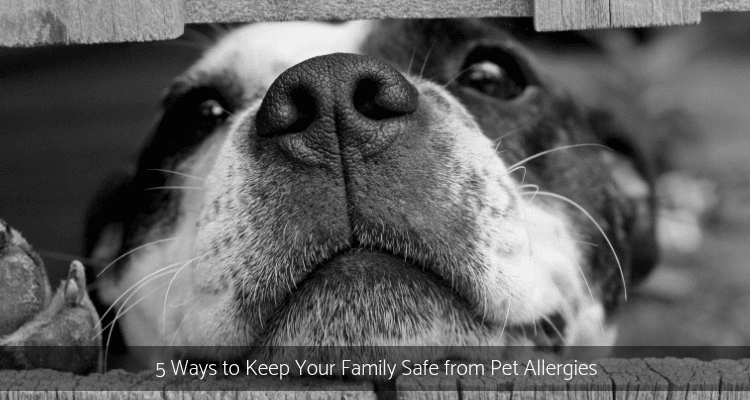For pet owners, pets are an inseparable part of the family. In return the pets become ‘de-stressors’, showering a great deal of love and affection to their masters.
Sadly, for some children and adults susceptible to allergies, pets can become a source of immense physical discomfort . Pet related allergies can trigger skin rashes and respiratory reactions such as wheezing or coughing. People with asthma are particularly vulnerable to pet allergies.
 Pets are an important source of health benefits to many individuals and close contact, such as when they live in homes, can be associated with a variety of risks, including medically significant allergic diseases (Ownby & Johnson 2016). There are NO ‘low allergy’ breeds when it comes to cats and dogs as the dander, saliva, skin and urine contain allergens (ASCIA, 2015).
Pets are an important source of health benefits to many individuals and close contact, such as when they live in homes, can be associated with a variety of risks, including medically significant allergic diseases (Ownby & Johnson 2016). There are NO ‘low allergy’ breeds when it comes to cats and dogs as the dander, saliva, skin and urine contain allergens (ASCIA, 2015).
Dogs produce a protein, in their saliva whilst cat allergen is in the sebaceous glands, which they spread to their hair and skin when they lick themselves and may exacerbate asthma in allergic individuals (ASCIA, 2015; Rao & Bhat 2015). Therefore, all breeds of dog and cat can potentially cause allergies, although some dogs may not shed as much hair and dander (and therefore allergen) as others such as the standard poodle.
These allergies are triggered by the allergy-producing proteins found in animal hair and dander (dead skin that animals shed). It is not just the dogs and cats who are to be blamed. Pet birds, hamsters, horses, cows or poultry can also trigger allergies.
Symptoms of Pet Allergies
The first step to dealing with pet-allergies is being able to identify the symptoms. Pet-allergies can cause the following reactions.
1. Respiratory Symptoms
- Sneezing
- Blocked nose
- Runny nose
- Coughing
- Asthma sufferers can experience chest pain and shortness of breath
2. Skin and Other Reactions
- Itchiness in the throat
- Eyes are itchy and watery
- Hives on the chest and face
- Skin rash
These symptoms become worse in the presence of other pollutants in the house such as cigarette smoke, chemicals released by common household products, dust mites and other allergens.
Preventing Pet Allergies
If someone in your family has these recurring pet-allergy symptoms, seek medical help. The doctor is likely to perform skin and blood tests to diagnose the problem.
If you own a pet, the affected family member will be advised to maintain a distance from the pet. As a worst case scenario, you may be asked to give up the pet.
Unfortunately, you don’t even have to own a pet to develop a pet allergy. Animal hair and dander can enter your home from other people’s shoes. At times, it simply blows in with the breeze. Regular and effective cleaning of the house may be the only way to tackle the problem.
Here are 5 things you can do to safeguard your family from pet allergies:
1. Use an air purifier to rid the home environment of animal dander and airborne pollutants. You can buy an air purifier as well as rent an air purifier through Mitey Fresh.
PRODUCT:
Air Purifier
E20 PLUS includes an additional final stage 6kg carbon filter for applications requiring heavy duty chemical & odour removal. Excellent for removing pollution from main roads, smoke and mycotoxins produced by mould spores.

2. Thoroughly clean the living room every week, including the carpets, upholstered furniture, cushions, curtains, and bookshelves. Use damp microfibre cloths to wipe off the dust. Use a vacuum with a HEPA filter. Keep pets off bedding and lounges, out of bedrooms and play areas.
Remember to use natural-home cleaning products instead of cleaning your home with commonly available household cleaning products that will only add to the level of toxins in your home. Utilise non-toxic carpet-cleaning services or buy one of our chemical free home-cleaning products to keep your home safe and allergen free!
3. Use dust mite allergy covers on your mattresses, duvets, pillows to make the bedding impermeable to animal allergens and house dust mite
PRODUCT:
Allerprotect Dust Mite Bed Set
Create a barrier between you and the dust mite allergens by enclosing the entire mattress, the entire pillow and the entire doona. Provides asthma and allergy relief by stopping the continual night time exposure to dust mite allergens while you sleep.

4. Restrict the pet’s movement. Keep certain sections in the house, such as your bedroom, pet-free. If possible, keep the pet outside the house.
5. Groom your pets regularly. Use Dr Ben’s Cedar Oil to keep your pet free of fleas. Bathe dogs and cats in plain water once a week. In order to prevent exposure to pet dander, groom and keep pets outside.
Alternative pet recommendations include gold fish, reptiles such as Blue Tongue Lizard / gecko / snake / long necked turtle (need handler licence), praying mantis, standard poodle, Devon Rex Cat.
Towards healthier living Carol Parr ♥
As a result of working with me, women and their families thrive, work places and their personnel prosper, mouldy and chemical / electrical sensitive occupants heal. They’re healthier, they’re alert, they’re happier, more relaxed, more productive, and enjoying life.
Together we bring about healthy indoor environments and create rooms that provide calmness, healthy sleep, relaxation and restored energy for you and your family, create workplaces that provide ideal personnel attendance and elevated productivity.
By returning indoor spaces to more natural conditions, we strengthen you and your family and your personnel’s mind, body and spirit. It’s nice that it also sustains our planet’s ecology, you’d agree.
You can find my latest enterprises by clicking here: http://www.linkedin.com/in/carolparr
References:
ASCIA. Pet allergy. 2015; (Online) Available: http://www.allergy.org.au/images/pcc/ASCIA_PCC_Pet_allergy_2015.pdf [September 3, 2017]
Ownby, D. and C.C. Johnson, 2016, Recent Understandings of Pet Allergies. F1000Research. (Online) Available: https://f1000research.com/articles/5-108/v1 [September 3, 2017]
Rao, B. and S. Bhat, 2015, Prevalence of IGE Mediated Airborne Allergies in Children. Journal of Drug Delivery and Therapeutics. (Online) Available: https://www.researchgate.net/publication/282809042_PREVALENCE_OF_IGE_MEDIATED_AIRBORNE_ALLERGIES_IN_CHILDREN [September 3, 2017]
Revised 16/9/19
Author
-
We’re glad you’re here. We’re Carol and Tony, founders of one of the longest running Healthy Home Blogs in the world, Mitey Fresh Australia. We’ve been on this journey for the last 25 years and are passionate about helping families sift through health hazards and triggers like allergens, mould, water damage, chemicals and EMFs, to get clarity about what’s toxic and what’s not so they can create a healthy and happy home for their family they love. Each month, people visit this blog seeking focus on the health and wellbeing of their loved ones, sustainable and effective practice tips and guides, to help create and manage healthier indoor spaces, improve the built environment that is pleasing to the senses and support healthy living and nature, every day. Starting this blog was to help change people’s lives, one family at a time, and we can’t wait to share how its allowed us to stand next to you and show you how interpreting these synergies between buildings and the environment they are built in will impact upon the health and well-being of those who occupy them. Find out more about Healthy Homes and what this blog can do for you!





